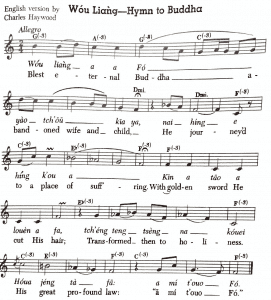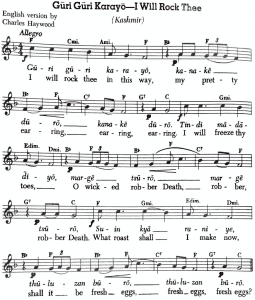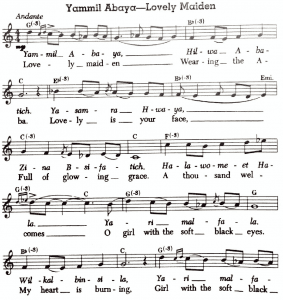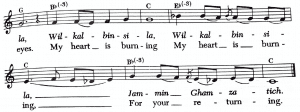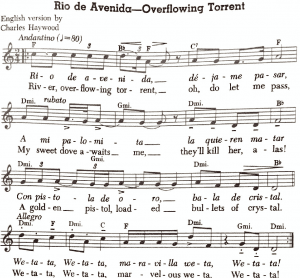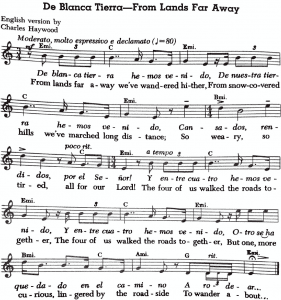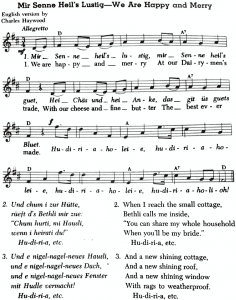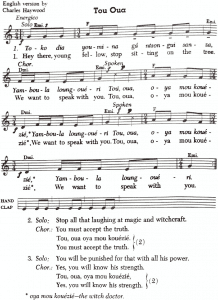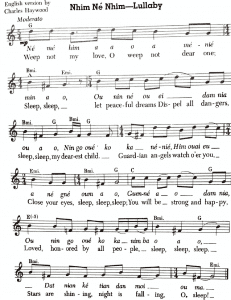Folk songs and sing a long songs from around the world can teach us so much about different cultures.
Traditionally, these songs were passed from generation to generation. And while today we tend to read sheet music or lyrics, the practice of learning orally still has many benefits. These include increasing neuroplasticity, preventing cognitive decline, and it has also been found to increase focus and creativity.
Preserving the oral traditions of passing songs down through the generations is a powerful way to connect, and it’s a fun activity to try at home, in the classroom, or with friends.
Getting to Know the Songs
It’s always wise to research songs before passing them on to your children or students, to gain a deeper understanding of the translation, and also to have an appreciation of the songs’ background.
Acknowledge where the songs you sing come from, and of course, always avoid cultural appropriation. Singing songs from other cultures is a golden opportunity to discuss cultures from around the world, and to expose students to history, current events, musical traditions, and more.
8 Sing a Long Songs from Around the Globe
With that said, here are eight songs, chosen from various parts of the world, that help you gain a deeper understanding of the cultures they represent. By no means exhaustive, this list offers a variety of achievable pieces with great opportunity for success. You will find less written about some as the musical and lyrical content is self-evident.
A thanks to Charles Haywood, author of “Folk Songs of the World” for his fine musicological work dedicating much of his life to collecting music of this sort.
CHINA
Wòu Liańg – Hymn to Buddha
When we think of Chinese music we often think of the Pentatonic scale (Do, Re, Me, So and La). However, that’s an over-simplification and historically inaccurate. This piece demonstrates that the Pentatonic scale isn’t the only way Chinese music was written.
We see a seemingly simple melody quickly diverge into complex modalism, as the first phrase ends on an F having begun on a B natural. Word painting and rhythmic variety can be seen on the phrase that speaks specifically about Buddha.
The middle two phrases hint at F Dorian, particularly with the trill and the cadences both on F and on C. An A Phrygian flavor can be heard in the penultimate line, as well as the final line, cadencing on an F.
A complex song for a complex story of Siddhartha, later known as the Buddha. On a further note, in the imposed chordal changes, the parenthetical negative three denotes derivations of our equal temperament.
It is recommended that the translation be used only secondarily if sung.
INDIA
Gūri Gūri Karayō – I will Rock Thee
Gūri Gūri, from India, is a lullaby often heard sung in Kashmir. Lyrically simple, it manages to paint a vivid picture of Indian life. Lullabies often have random groupings of items (i.e. Rocking bird, diamond ring, looking glass, etc.), and that’s something that’s evident in this piece as well.
Musically, the notes indicate uneven temperament. A Mi to Re cadence ends each phrase. This is suggestive of a Dorian tonality, despite the major decent of the melody from Sol to F. There is great rhythmic variety with syncopation and triplets. Beginning each phrase on Sol adds unity to each of the three phrases, as it then rises up and back down to rest on Re.
As these were orally transmitted, one can be encouraged to use a moveable Do system, whereby Do is not always C natural. Do keep the rhythmic and intervallic integrity intact.
IRAQ
Yammil Abaya – Lovely Maiden
The Lovely Maiden from Iraq immediately shows harmonic minor in its B to Ab on the syllable ‘A-’. We also see this in line three from the E to the Db. The entire piece resolves on a C, suggesting that the entire piece was written in C melodic Minor, while borrowing from different modalities in order to word paint.
Staying within one central key center was not as important as coloring the text.
The song tells of the burning desire the singer feels for a girl who has gone away.
PERU
Rio de Avenida – Overflowing Torrent
Rio de Avenida tells of the very real horrors of colonialism as the writer longs for his love across a torrential river. We don’t find out the fate of his ‘dove.’
The torrential rhythms seen in this piece symbolize the river’s teeming currents. Use of triplets, sixteenth notes, eighth notes, and accents on syncopated notes create a momentum that singers can ride upon throughout the piece.
The lack of leading tones opens the song to a pentatonic flavor, indicative of a wide open, moving river.
BOLIVIA
De Blanca Tierra – From Lands Far Away
This song tells of a pilgrimage to a holy site at Lake Titicaca. The forward movement of the rhythm shows the earnestness of the pilgrims while the “4/4” section admits weariness.
SWITZERLAND
Mir Senne Heil’s Lustig – We are Happy and Merry
This is a simple diatonic piece, but shows a brief look at yodeling during the chorus.
In fact, because of the yodeling nature of the chorus, the musicologist has not bothered to create a direct translation. The lyrical nature is light, speaking of the dairyman’s cheese and butter.
Throughout the entire piece, a I – V melody is kept, showing the complexity of the yodeling technique as well as the simplicity of a dairy man’s butter, and the revealing the daily life of villagers in Switzerland.
CONGO
Tou Oua –
This piece from the Congo tells of a boy who does not believe in the power of witchcraft. And the community’s desire to educate him. It shows and holds many gems for teaching: polyrhythms, spoken text, alternating voices, and the lyricism.
The form almost becomes a mantra when done correctly. What affect would this have to a boy refusing to meet with community elders?
VIETNAM
Nhim Né Nhim – Lullaby
This song shows not a disregard for time signatures. And it also simply doesn’t need them, they were clearly written in this sheet music as an afterthought.
This allows the words to flow in the A section and the B section to have its own character. The tessitura of the piece is no more than a fifth, staying right around the leading tone and the tonic, G, giving it a very lulling quality. Note the lack of equal temperament in the suggested chordal changes.
Sing a Long Songs & Folk Songs Can Teach Us So Much About the World
Folk songs and sing a long songs can teach us so much, both about the world, and about ourselves. It’s easy to see the themes common in so many of these songs. While these pieces are from diverse cultures, they speak of experiences shared across cultures.
From lullabies to circle songs, these songs are both musically and culturally educational. Remember to create a safe space for discussion when singing these, to stay authentic to the melodies, and also to be brave in trying to pronounce some of the more challenging words.
By singing these sing a long songs, you’re honoring the cultures where they originated, teaching others to do the same, and hopefully in the much larger sense, modeling openness and acceptance in the world.
Phina Pipia


